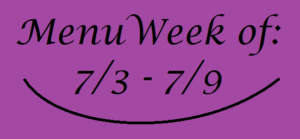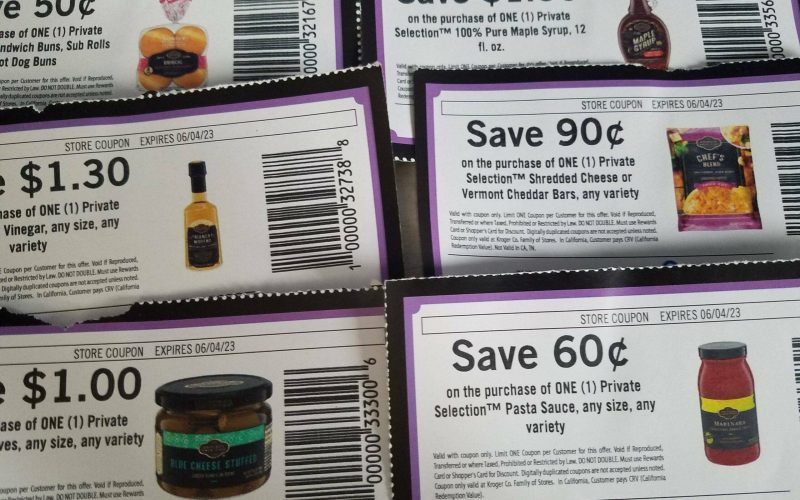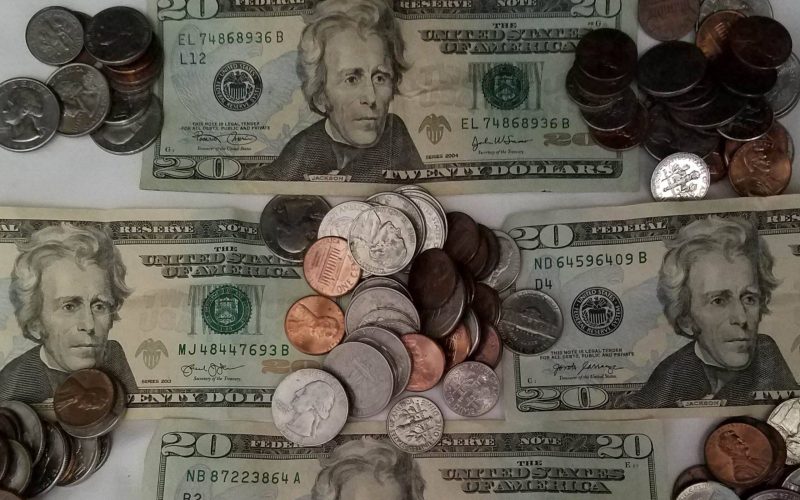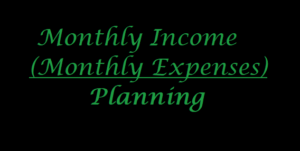Are you tired of throwing away food at the end of a week or having someone ask you what is for dinner and not have a clue what you are going to make? Menu planning will help minimize food waste and as a bonus you will always know what the plan is for dinner! I will walk you through my menu planning process and hope it will inspire you to create your own weekly menu.
The Refrigerator
I am a Monday grocery shopper and Sunday is my menu planning day. I start by looking at what is in my refrigerator. I remove the “expired” items and make a list of the items and quantity that is left. I place a check mark next to the items that MUST be used this week. I also change the font to red for the items that need to be used in the next day or two.
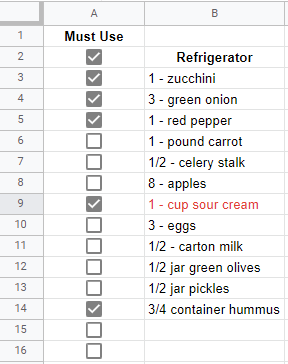
The Pantry
Next, I account for the pantry items that are open and need to be used in a reasonable amount of time such as 1/2 bag sun dried tomatoes, 1/4 bag chips, 2 onions, 8 potatoes, etc.
After I have accounted for perishable pantry items I look at the dried pantry items such as beans, canned products, rice, pasta etc. I like to keep a good variety of these foods at all times. This means if I am planning on using a can of beans then I often add it to my list to make sure I have a back up.
The Freezer
Take inventory of what is left in your freezer such as vegetables, fruit, frozen bread, etc. Just like the refrigerator make a note of items that need to be used up quickly. Try to make an effort to include these ingredients in your next menu.
I often times freeze items such as: ginger, pesto, tomatoes in adobo sauce, etc. It is important for me to keep track of when I put these items in the freezer because if they are not used up in a month or two after I freeze them, I end up tossing them in the trash which defeats the purpose of freezing them to prevent waste.
Weekly Grocery Store Ad
Pull up your weekly shopper from the internet and notate things you need and items your family enjoys that are on sale. I never forget the frozen section to see what treats I can sneak in!
I try build a weekly menu based off vegetables, fruit and meat that is on sale for the week. The nice thing about on sale produce is it usually consists of what is in season so it should be delicious.
Collect your weekly coupons and add the items to your grocery list with an asterisk as to remind yourself it is a coupon item.
I like to keep my coupons in my purse so I don’t forget them on my shopping day.
Creating the Menu
Let’s start building the menu and grocery list. From the example above about refrigerator items, I would need to use sour cream as fast a possible. This means I start thinking of meals I know we like that have sour cream. Once I come up with a meal I choose the day of the week we will eat it such as “Monday” and write it down on my sheet. Next I look at the ingredients in the recipe, notate what I already have and add the ones I need to a grocery list.
Think of (or search for) different recipes that have the ingredients that are already on your grocery list. The more you can incorporate items you are already buying and items you have, the cheaper your grocery bill. Best of all, lower to no waste!
I like to write meals down in a spread sheet as I come up with them and keep a running list of grocery items so I know what new items I am adding. I try my best to incorporate items that come in large quantities into multiple meals for the week such as rice or potatoes.
Example of my Meal Planner
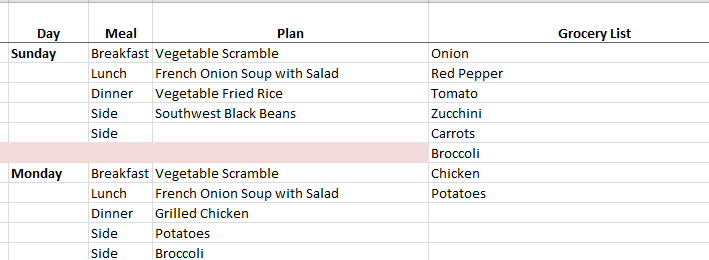
Narrow it Down
Do you have food groups that you love such as Mediterranean, Italian, Mexican, etc. Sometimes it is easier to start with a list of meals you love and incorporate them into a menu. You’ll be surprised how many ingredients overlap.
I think it is good to have a night of the week where we do not eat meat. Some people do “Meatless Monday” as to remember the one day. I don’t have a particular day of the week, it varies from week to week. I also do not include meat in every meal we eat. Most of the week we do not have meat with breakfast and I try to limit the amount of lunches we have with meat. Often times I add beans instead to increase our fiber and protein.
I love Frittata Friday. There are weeks when we eat out more than we planned and I have a lot of vegetables that need to be used up. Sometimes I also have leftover potatoes or rice which are perfect additions to a Frittata. I have made some deliciously strange Frittata’s over the years. Eggs and milk are main staples that I must have in our house at all times.
Serving Size
The serving size of a recipe is a critical part to meal planning. How many does it feed and what is the serving size? Is the serving size realistic to fill up someone in my family? Knowing and accounting for this will help with making sure you have a plan for the leftovers or if you will need an extra side dish.
Make sure you add the leftovers into your menu plans so you don’t have food waste at the end of the week. If I have a dish that feeds 3 then I will have an extra meal and plan that for a lunch.
Grocery List
I add items to my grocery list at the same time as I add meals to different days of the week. This helps me keep an active mind on what I am already buying so I can find other meals that will use the same ingredients.
If I wait to create my grocery list until I have selected all of my meals for the week then there is a large chance I will not use up all the groceries purchased that week. So I will freeze what I don’t use or even worse be forced to toss them.
Start Creating
It seems like a lot to remember, but the truth is, the more restrictions I have from food we have already purchased, the easier the menu is to put together. I have also been menu planning for two decades, so I might just be used to my rhythm.
The most important part of the menu planning experience is trying. It takes time to get good at it but YOU WILL. Sometimes you will find meals that sound good but don’t fit in with the week of meals you are planning. That’s ok, just save it for the next week!
One last note that might be the best advise in this article. Save the menu plans that really work well for you. If you choose to do this your collection of menus will grow. This means when you don’t feel like creating a menu for the week grab an old one and you are done! Have fun!
Quick Checklist
- Inventory your refrigerator
- Inventory your pantry
- Inventory your freezer
- Check your weekly grocery store ad
- Create your weekly menu
- Make your grocery list
- Check your paper coupon and check for digital coupons
